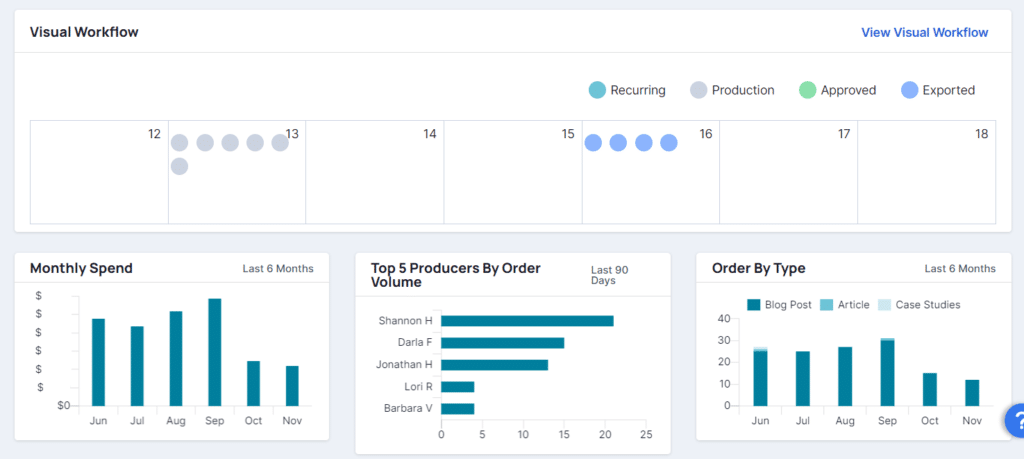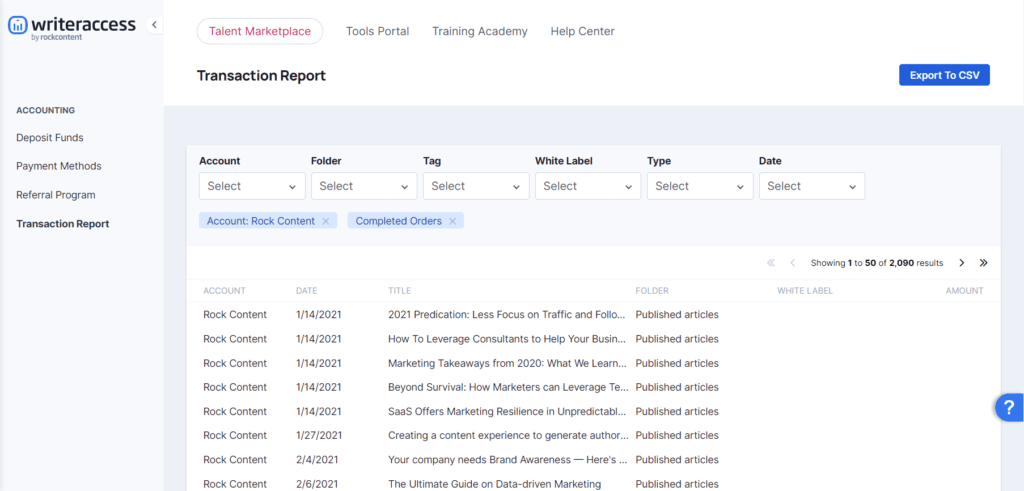Regardless of its industry, niche, or long-term goals, every business needs a solid marketing budget in place. Not only does a marketing budget help a business properly plan out its advertising strategy, but it also streamlines the process of measuring overall return on investment.
However, putting together a marketing budget from scratch (or making major changes to an existing one) can be tough when you’re not sure where to start. Here we’ll go over everything you need to know about how to manage a marketing budget and set your company up for ongoing success.
- Why You Should Keep a Close Eye on Marketing Expenses
- How to Manage a Marketing Budget in 4 Steps
- 4 Tools for Marketing Budget Management
- How WriterAccess Can Help Your Marketing Expenses Management
- Conclusion
Why You Should Keep a Close Eye on Marketing Expenses
When it comes to money, there’s no such thing as being too careful. It’s easier to overspend than you might think, especially when it comes to certain types of marketing expenses.
Having a plan in place ensures you’re not needlessly eating into your profits, as well as that you’re spending your money in the right places. Establishing a proper marketing budget also:
- Takes the guesswork out of planning your ongoing marketing campaign
- Gives marketing departments an efficient way to keep track of finances
- Helps marketing professionals better track ROI
- Encourages marketing teams to sharpen their strategies
- Ensures unprofitable approaches are promptly discarded in favor of marketing tactics that deliver
Naturally, it takes money to make money. But without a marketing budget, it’s impossible to know how much is too much to be spending. (A good rule of thumb to follow is to spend about 10 percent of your revenue on marketing.)
Setting and tracking a marketing budget helps each business decide how much of that budget should go to various aspects of a marketing campaign – pay-per-click advertising versus content marketing, for example.
How to Manage a Marketing Budget in 4 Steps
Ready to start the process of setting up, implementing, and managing a marketing budget that will get you results? Here are some key steps to follow.
1. Decide between quarterly or annual budgeting
Although many businesses develop and set their marketing budgets on an annual basis, doing so quarterly is also common. If you run a small or new business, are working with a limited budget, or are completely new to marketing budgets, going quarterly may give you a better chance to figure out what works best for your company and goals.
2. Settle on your marketing goals
Collectively speaking, all aspects of your ongoing marketing strategy should be focused on either boosting revenue through sales or developing your sales funnel. However, every business will naturally have its own goals in mind, so it’s important to fully understand yours before you just dive in.
Work with your team to set both long-term and short-term goals. It’s also important to determine how you’ll assess your progress along the way, so be sure to set your key performance indicators right out of the gate, as well.
3. Understand our target market
Before you can decide which types of marketing should receive priority when setting your marketing budget, you need intimate knowledge of who you’re marketing to. Brainstorming a set of buyer personas can help you get into your target audience’s collective heads and develop a more effective strategy.
Start the process of developing new buyer personas by interviewing not only your current customers but also other members of your target demographics. Tools like Google Analytics can help you figure out which demographics your existing visitors belong to.
4. Settle on your marketing channels
Once you know where your ideal customers tend to go for information on products and services like yours, you’ll have a better idea of which marketing channels to focus on moving forward. Examples include:
- Outbound marketing: Outbound tactics are great for spreading your brand’s message to broad sections of your target audience. Examples include TV spots, display ads, and cold email outreach.
- Inbound marketing: Inbound tactics help you connect with consumers who are already interested in products you sell or topics your brand covers. Examples include blog posts, ebooks, SEO content, and video marketing content.
- Digital marketing: Digital marketing covers essentials like social media marketing, opt-in email marketing, content marketing, SEO, and PPC ads.
- Brand-building: This category is focused on goals like building brand awareness and frequently overlaps or is combined with a company’s digital marketing efforts.
Decide how important each channel will ultimately be to your ongoing marketing campaign based on what you know about your audience. Then consider different strategies for dispersing your budget among them. Evaluate your progress often and make changes accordingly.
Many businesses choose the 10-percent-of-revenue option we touched on earlier. However, you can also base your budget on how much your competition might be spending or on specific goals you’re pursuing at the time. You can also adopt a top-down approach that leaves the final figures up to management to reevaluate annually or quarterly.
4 Tools for Marketing Budget Management
Here in the digital age, there’s a wealth of tools to choose from that take the guesswork out of how to manage a marketing budget. Here are some options to take a closer look at:
- Proof: This comprehensive tool is a great pick for marketing managers who want one tool that can do it all – everything from analytics to campaign planning according to budget.
- Uptempo: Formerly known as Allocadia, Uptempo is another great all-in-one tool for budget planners of all experience levels. Oversee financials, manage workflow, leverage predictive insights, and more.
- Planful: Planful is a terrific option for streamlining the way your marketing department already plans, finalizes, analyzes, and reports to save you time, effort, and money across the board.
- WriterAccess: WriterAccess is an elite content production platform that takes the guesswork out of effective, budget-friendly content production at scale. Assemble a team of expert writers and content producers that will really make your marketing content sing.
How WriterAccess Can Help Your Marketing Expenses Management
As discussed above, efficient management of marketing expenses is key for businesses aiming to optimize their budgets and achieve maximum return on investment.
WriterAccess recognizes the significance of transparent financial tracking and offers robust tools to assist users in managing their spending on the platform effectively. Here’s how WriterAccess can help streamline your marketing expenses management:
Monthly Spend Report
WriterAccess provides users with a detailed monthly spending report, offering a comprehensive overview of how funds are allocated across various services. This report breaks down expenditures, allowing users to understand where their budget is being utilized most effectively and identify areas for potential optimization.

Transaction Report
The platform also offers a transaction report, which provides a granular view of individual transactions. This level of detail enables users to trace every dollar spent, ensuring transparency and accountability. The transaction report is particularly valuable for users who want to scrutinize specific engagements or track the progress of multiple projects simultaneously.

Auto-Deposit
Users can set up automatic deposits, enabling the platform to add funds to their accounts when balances fall below a specified threshold. This not only streamlines the payment process but also prevents any disruptions in content creation due to insufficient funds.
You can access all of these handy tools and more if you get started with WriterAccess right now!
Conclusion
Now that you have a better understanding of how to manage a marketing budget effectively, it’s time to build a catalog of incredible marketing content that’s sure to get you results. Instantly connect with the best content writers for the job when you sign up for your free 14-day WriterAccess trial today!








